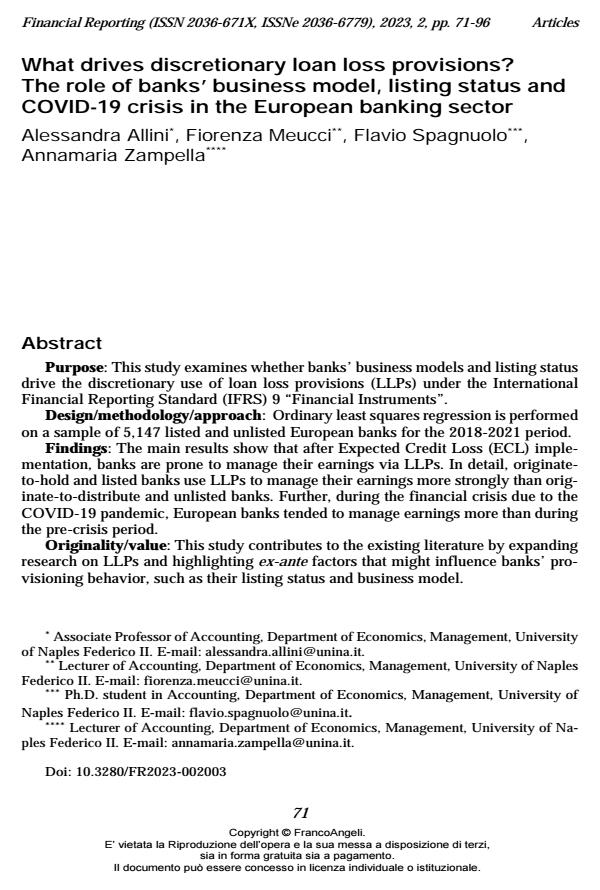What drives discretionary loan loss provisions? The role of banks’ business model, listing status and COVID-19 crisis in the European banking sector
Journal title FINANCIAL REPORTING
Author/s Alessandra Allini, Fiorenza Meucci, Flavio Spagnuolo, Annamaria Zampella
Publishing Year 2023 Issue 2023/2
Language English Pages 26 P. 71-96 File size 234 KB
DOI 10.3280/FR2023-002003
DOI is like a bar code for intellectual property: to have more infomation
click here
Below, you can see the article first page
If you want to buy this article in PDF format, you can do it, following the instructions to buy download credits

FrancoAngeli is member of Publishers International Linking Association, Inc (PILA), a not-for-profit association which run the CrossRef service enabling links to and from online scholarly content.
Purpose: This study examines whether banks’ business models and listing sta-tus drive the discretionary use of loan loss provisions (LLPs) under the Interna-tional Financial Reporting Standard (IFRS) 9 "Financial Instruments". Design/methodology/approach: Ordinary least squares regression is per-formed on a sample of 5,147 listed and unlisted European banks for the 2018-2021 period. Findings: The main results show that after Expected Credit Loss (ECL) im-plementation, banks are prone to manage their earnings via LLPs. In detail, origi-nate-to-hold and listed banks use LLPs to manage their earnings more strongly than originate-to-distribute and unlisted banks. Further, during the financial crisis due to the COVID-19 pandemic, European banks tended to manage earnings more than during the pre-crisis period. Originality/value: This study contributes to the existing literature by expand-ing research on LLPs and highlighting ex-ante factors that might influence banks’ provisioning behavior, such as their listing status and business model. Practical implications: This study provides useful insights for regulators and accounting setters in making informed decisions regarding provisioning policies, even during periods of turmoil.
Keywords: loan loss provisions, business model, listing status, earnings manage-ment.
Jel codes: M40, M41
Alessandra Allini, Fiorenza Meucci, Flavio Spagnuolo, Annamaria Zampella, What drives discretionary loan loss provisions? The role of banks’ business model, listing status and COVID-19 crisis in the European banking sector in "FINANCIAL REPORTING" 2/2023, pp 71-96, DOI: 10.3280/FR2023-002003